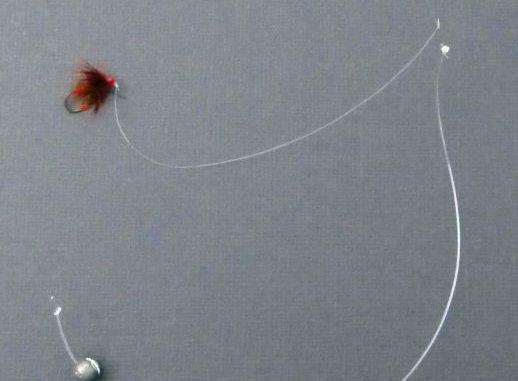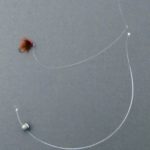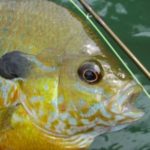
Czech it out! It’s not just for trout.
Recently I read where efforts are being undertaken to restore False River to its former glory. This deepwater oxbow lake near New Roads once ranked among the best lakes in the country for bass and sunfish.
False River is very special to me. I started my fly-fishing journey on its green-clear waters. It was my home water for nearly 20 years.
It was also the source of many great fishing tales.
Like a late February trip with my friend Mike Causey.
As soon as water temps hit 60 degrees, redears get active. We knew they were staging up over shell beds in 6 feet of water.
Mike was using spinning tackle, straight-lining a 1/32-ounce jig tipped with grass shrimp. The bite was so subtle he had to finger his line.
When one did eat his bait, those big chinquapin fought like a wet cat. Don’t ask me how I know what fighting a wet cat is like; PETA might be reading this.
Using my fly rod required some adaptation. I used an 8-foot leader made entirely of 6-pound monofilament. At the end of the leader was a size 12 wet fly with a split shot a few inches above to get the near-weightless fly down to the fish.
With such a light leader and a split shot, my cast was more like a slow lob. Once the fly was in the water, I took up the fly line so the end of the line was just above the water.
I vigilantly watched the end of the fly line for any motion in case I wasn’t able to feel the bite.
Little did I know I was Euro-nymphing for bream.
Nymphing in Europe has been around for hundreds of years. But the special technique referred to as “Euro-nymphing” began in 1984 when fly-fishing teams from Poland, Germany and Czechoslovakia competed on the Dunajec River in Poland in a trout tournament. The Polish team won using a “short line” technique — a fancy way of saying that only a few inches of fly line extended out the rod tip.
In 1986, Slavoj Svoboda of the Czech Republic won the World Championship in Belgium using this tactic and a Hares Ear nymph for the fly.
In 1990, the Czech team modified this system by adding a weighted “anchor fly” to the bottom and tying in a dropper fly above. The anchor fly was narrow and heavily weighted to sink fast.
The combination of short line and the use of an anchor fly with dropper became known as Czech nymphing.
Later adaptations added two and three dropper flies to the rigging. It led to three more world titles for the Czech Republic.
Since 1996, there have been many variations of this technique, adopted by the French, Spanish and other national fly fishing teams. As a result, you’ll hear terms such as French-nymphing and Spanish-nymphing. But it’s all Euro-nymphing.
Here’s a simple explanation of what the Czechs were doing: They were tight-lining for trout with a fly rod.
Yep, that’s about it.
With a very short amount of fly line outside the rod tip (none on the water), a long and light leader, and a heavily weighted fly at the end, the Czechs were able to detect the most subtle of strikes from very wary tournament-hardened trout.
When Euro-nymphing for trout in a stream, you use a long rod (10 feet to 12 feet). There’s no false casting or long casts. You make an open loop cast upstream, and let the anchor fly sink to the bottom.
As the current pushes the leader past you, your rod tip follows the leader so that it sits straight down to the flies.
Later I learned from international angler Davy Wotton that a variation involves replacing the anchor fly with a split shot. To keep the split shot from sliding off, put an overhand knot below the shot.
Euro-nymphing is a great tactic for early season redears and other gobbules (aka bream) holding in deeper water.
But how does it work without a current?
Let me introduce you to the “false current” technique.
You make a very short cast in front of you. Let the split shot hit bottom. Take all slack out so the line is tight between rod tip and fly. Very slowly drift your rod tip in a sweeping motion from front to back.
When the rod tip is 180 degrees from where it started, let a little more fly line out the tip, pick up the rod tip into the air, and cast the leader forward and start over again.
As for the dropper fly, Slavoj Svoboda had the right idea. A Hares Ear Nymph is hard to beat, especially for chinquapin.
But as my days at False River proved, bream also love wet flies. This is where the Euro method pays big dividends; even lightly-weighted or non-weighted flies can be used.
With Euro-nymphing, I have one word for the gobbules — “Czech-mate.”




